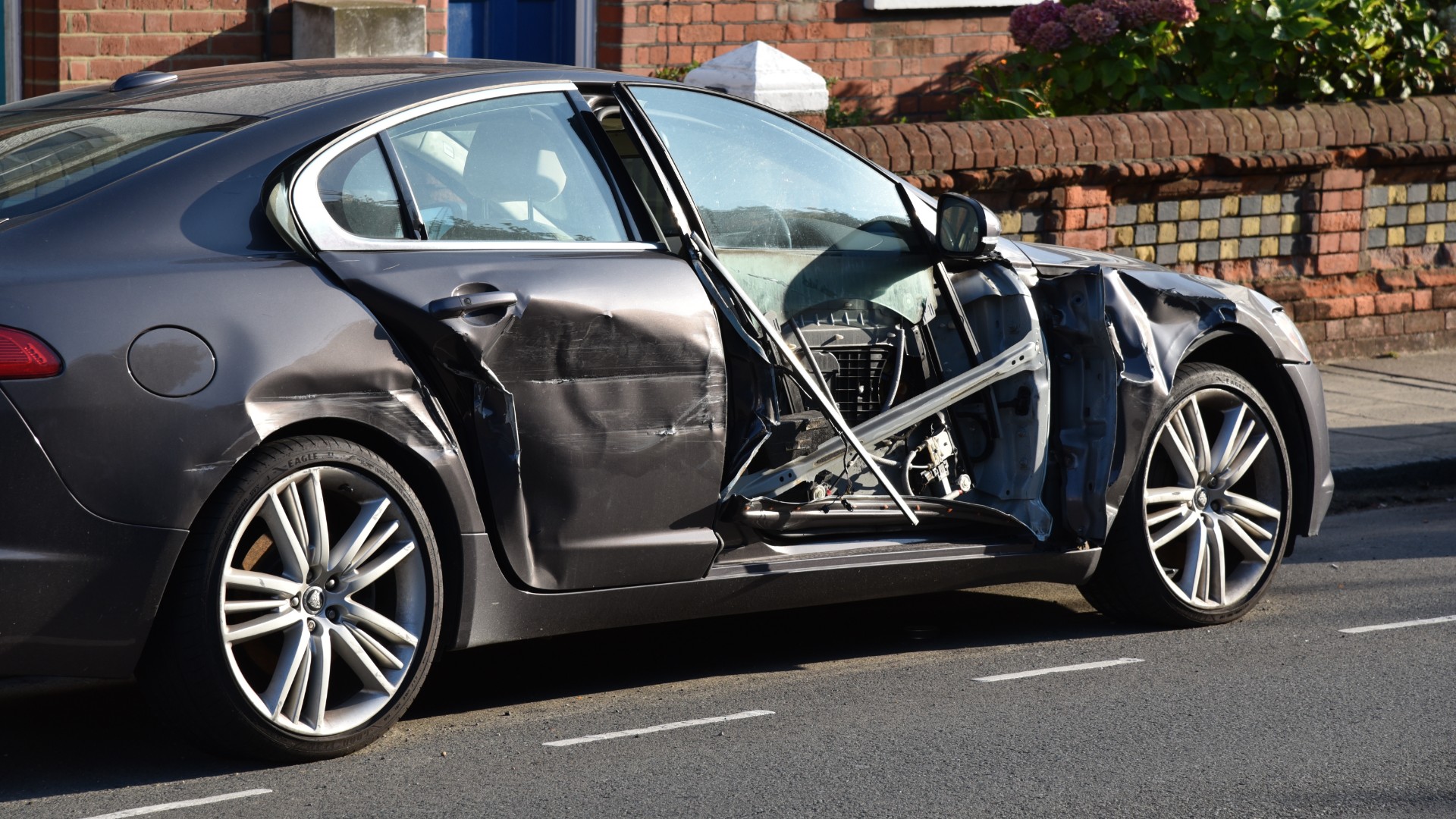
A car accident is always a stressful and upsetting experience. At best, you have damaged your vehicle and it’s likely to be expensive. At worst, there may be injuries to your person – or to others involved. It’s something we all aim to avoid.
If possible, keep your cool after an accident has happened, as there are certain things you must do immediately afterwards.
Read on for our step-by-step advice on what to do following a car crash. Hopefully you will never need it.
Always stop your car

Failing to stop after a collision is illegal. If you drive away from the scene of the accident, you could end up with a six-month prison sentence or a £5,000 fine. Stop the car and turn off the engine – it could be unsafe to drive – but make sure you switch the hazard lights on.
If you have a warning triangle, place it to the side of the incident where cars are approaching. Be careful not risk your own safety by standing in the road.
Also, as a reader of Motoring Research kindly pointed out, don’t use a warning triangle on the motorway. You will be breaking the Highway Code if you do.
Check the people involved
It’s a courtesy as much as a necessity, but speak to everyone involved and check they are OK. You’ll also want to get an impression of the other driver, if one is involved. Try to assess whether they may be under the influence of drink or drugs.
Take note of any injuries received by yourself or anybody at the scene. Alternatively, write a note to confirm that nobody is injured, if that is the case. It could help prevent a false claim later.
Use your mobile phone to call the relevant emergency services if needed, be it police or ambulance, and don’t be afraid to flag down another motorist for help. Even if nobody is injured, you should report the accident to the police within 24 hours on the non-emergency number (101).
Assess the damage

Once you have dealt with the people, check over the vehicles. Make a note of all the damage caused, including inside the cars (if an airbag has deployed, for example). Grab your phone and take as many photographs as you can.
Note down details of the other car – including the make, model, registration number and colour – then write down the location, weather conditions and time of the accident.
You’ll also want to check whether any personal items carried in the car have been damaged by the incident.
Exchange details

Swap phone, address and insurance details with the other driver involved. Don’t admit liability for the accident, however. This is for the insurance companies to decide.
Note down the names of everyone involved, including witnesses and the ID numbers of emergency services personnel on the scene.
As an aside, it’s a good idea to keep a notepad in your car for such situations, although the notes function on your phone will also do the job.
Tell your insurance company

As soon as is convenient, preferably at the scene, inform your insurance company about what has happened. You don’t have to go through it all in the moment, just let them know.
When the time comes to talk through the accident more fully, be sure to have your insurance paperwork to hand.
If the accident happens outside your insurance company’s operational hours, you should be able to call a recovery line for assistance.
ALSO READ:
London ULEZ expansion: everything you need to know
Warning triangles must not be used on motorways. I found this out only recently. Initially I was surprised, but it makes sense when you think about it…. HIGHWAY CODE RULE 275 includes the statement “Never attempt to place a warning triangle on a motorway”
Thanks for sharing, Rich!
Thank you for the advice that right after you get in an accident turn off the car and turn on the hazards. About a week ago, I was talking to my sister, and she mentioned that she is buying her first car, and she is a little worried about being prepared if anything happened. I will have to tell her your tips and help her look into auto accident treatment centers in case anyone was injured.
This article is great! I support you.
GOOD ADVICE ABOVE.
MAKE SURE YOU HAVE DOCUMENTS SUCH AS COPY OF INSURANCE POLICY ETC AND DRIVING LICENCE TOO
I HAD LOST MY WALLET CONTAINING DEBIT CARD/NATIONAL INSURANCE/ BUSPAS AND SENIOR DISCOUNT TRAINPASS
COULD NOT GET COUTESY CAR FROM ENTERPRISE WITHOUT MY DRIVING LICENCE DETAILS
PERSONALLY TAKE PHOTO IN THE MOBILE TOO..
SAFE TO KEEP IT SAFE AT HOME ALONG WITH PASPORT.
LESSON LEARNT
INTERESTINGLY YOU ARE ALLOWED TO DRIVE CAR WITHOUT CARRYING LICENCE WITH YOU BUT DRIVING LICENSE NUMBER IS IMPORTANT..
CAR HIRE COMPANIES WILL NOT ISSUE LOAD CAR WITHOUT A) DEBIT CARD AND B) LICENSE
SHARING MY EXPERIENCE